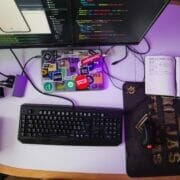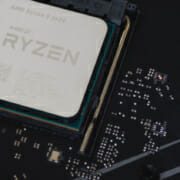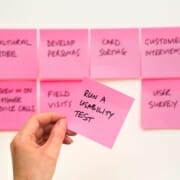7 Steps To Build An Android MVP App
Are you sitting on the fence of whether or not to build an Android MVP? Given the global proliferation of Android smartphones and other devices, it makes sense to support the platform. But it’s also a platform that’s harder to develop for than iOS, making some developers balk at the thought. While Android development does have its fair share of quirks, it’s still worth supporting in the long run. Follow these 7 steps to build an Android MVP app and reach users around the world.
Why You Need An Android MVP App
The market for Android apps is dynamic and ever-growing. Unlike Apple’s tightly locked iOS ecosystem, Android is truly open. While most users download their Android apps from Google Play, that’s not the only choice available to them. Popular Android digital storefronts such as Amazon AppStore, Aptoide, and GetJar are several good alternatives. And smartphone manufacturers such as Huawei and Samsung have their brand-specific app stores, namely: Huawei AppGallery and Samsung Galaxy Apps.
Also, the Android platform makes it easy to sideload apps, allowing users to download and install apps from any source, including directly from the developer’s website. Undoubtedly, all these storefronts give developers ample opportunities to leverage their apps and grow their respective audiences further. Moreover, these storefronts make the perfect testing ground to try out new app ideas.
What all this means is that you should be developing an Android MVP if you’re targeting this platform. An MVP will allow you to reduce your costs and risks by focussing strictly on essential features. Then, you can test the viability of your ideas on a variety of markets and audiences. And once you receive feedback and analyze all relevant data points, you can then iterate your app MVP accordingly.
iOS MVP Example Takeaways
While Android’s a platform that every app developer should consider supporting, we have a few takeaways regarding iOS. From recent findings, iOS apps have higher engagement and retention rates. Furthermore, iOS users buy more purchasable apps and spend more on in-app purchases than Android users. And from a developer’s standpoint, it’s usually a faster and smoother process to develop and test iOS apps. Thus, iOS is better suited for creating an app MVP in most cases.
And to give you a brief idea about what this entails, let’s go over an iOS MVP example. NS804 developed Brew Trader, which is an app aimed at craft beer enthusiasts. The app helps them track down fellow aficionados located nearby and trade bottles in an efficient manner.
To develop this app, we set out to make our MVP ideation as simple as possible. While we initially listed down plenty of cool ideas, we eventually narrowed these down to the most relevant. The Brew Trader MVP ended up with three screens: a map showing bottle locations and the latest offers, a user profile, and a messenger so that users can DM each other. We built this MVP using the modern Swift programming language and by implementing a view controller design pattern.
1. Start With A Clear Purpose
One lesson that the above iOS MVP example offers us is that having a clear purpose is vital. As we’ve already revealed, Beer Trader is a simple and incredibly focused app. And that’s what defines most of the best and successful apps in the marketplace.
Before embarking on Android MVP development, you’ll need to ask yourself what problem you’re trying to solve. Ideally, you’ll come up with a no-frills solution that solves this one problem exceptionally well. Never try to solve many problems in your MPV, as it will lack direction and suffer feature creep.
2. Define Your Audience
We’ve mentioned how Android’s wide variety of storefronts make it easy to target a large audience beyond Google Play. However, audiences vary widely from storefront to storefront, and they all have different expectations. For example, Amazon AppStore users are more accustomed to purchasing apps and games in particular. But that’s not true for Aptoide users, who predominantly seek free apps without any geo-restrictions. On top of that, Google Play’s audience is incredibly diverse given the popularity of the platform.
So, what’s a busy Android developer to do? As always, you’ll want to keep things as simple as possible. Don’t try to target all these users and stick to one or two app stores initially. If you’re developing a premium app with in-app purchases, it makes sense to target Google Play and possibly Amazon AppStore users.
But you’ll need to narrow down your target audience even further. Perhaps you’re creating a VR architectural visualization app that depicts Brutalist architecture. In that case, you’ll want to target architects and designers based in Canada, the Czech Republic, the USA, the UK, Russia, Serbia, and Sweden, where this type of architecture is prominent.
3. Think About What To Scale Back
Scaling back and finding your true minimum is one of the most important things you can do. But you should be careful, as you don’t want your Android MVP to be so devoid of features that it becomes useless. Aim for the least amount of features but ensure that they all work flawlessly. Be sure to implement or retain all core functionality relevant to your app and avoid or remove any fluff. While there are no guarantees, most users will find such an app valuable.
4. Create A Detailed Explainer
Clients, users, and stakeholders will want to know what your app MVP is all about. This presents the perfect opportunity to create a detailed explainer. Carefully lay out your plans, even if they don’t all make it into the MVP. Also, consider adding a roadmap so that your audience knows what you have planned in the months ahead. And use video, especially if your MVP relies heavily on graphics and other visual elements.
5. Design The UI and UX
You’ve worked hard on creating the logic for your app, so don’t skimp on the design work either. Ensure that you’re following best practices and guides aimed at Android developers. As you go about building your user interface (UI), consider how your app bar, bubbles, dialog windows, menus, pop-up messages, and other UI elements work together. Ultimately, you want a clean and cohesive UI that flows naturally. And look closely at engagement and usability, as these correlate with your MVP’s user experience (UX).
6. Choose Your Language
A key benefit of Android development is that you can choose from several programming languages to create your project. Most developers will probably go with Java since this is the official language of the platform. However, in recent years, Kotlin has been gaining popularity since it’s similar but easier than Java.
For game developers, C++ is an apt choice, especially when optimal performance is essential. But Unity that uses the C# language has become a popular option amongst cross-platform and mobile game developers. And for simpler 2D games where performance isn’t a big concern, JavaScript and LUA are valid options.
7. Create A Testing Group
Try to create a community that backs your app as early as possible. Even if you only manage to gain a small following early on, these users can be invaluable. Entice them with competitions and insider early access initiatives to test your app. Then, set up a robust feedback pipeline so that these users can conveniently share their thoughts with your team. Keep track of all this feedback and ensure that your team makes the necessary iterations. Finally, always thank and credit your users for all their contributions.
In Conclusion
Developing for Android can be a challenging yet rewarding experience. However, it’s possible to overcome the more challenging aspects of the platform by following these 7 steps. Contact us today to find out how NS804 can make your next Android app simply amazing.













Leave a Reply
Want to join the discussion?Feel free to contribute!